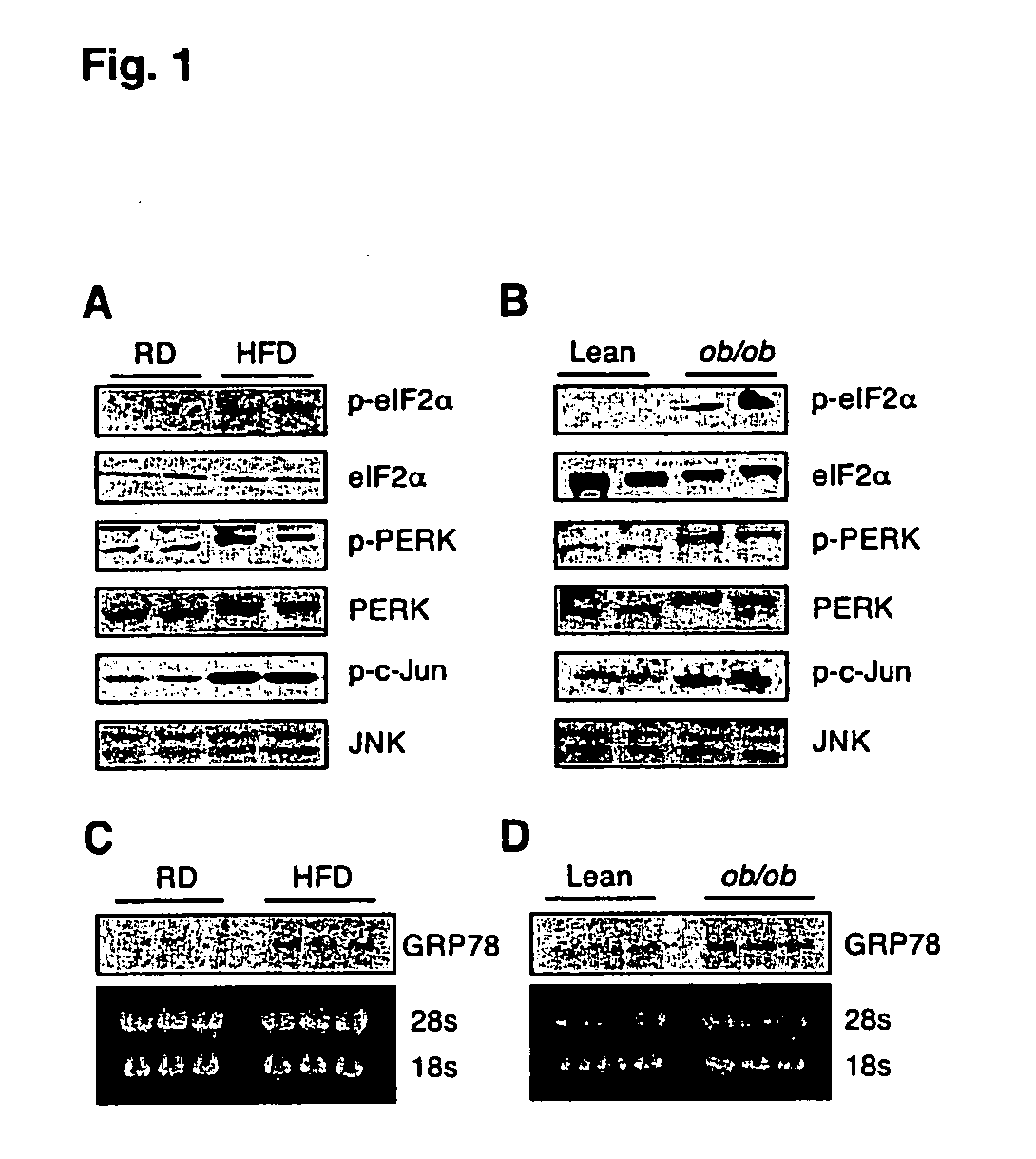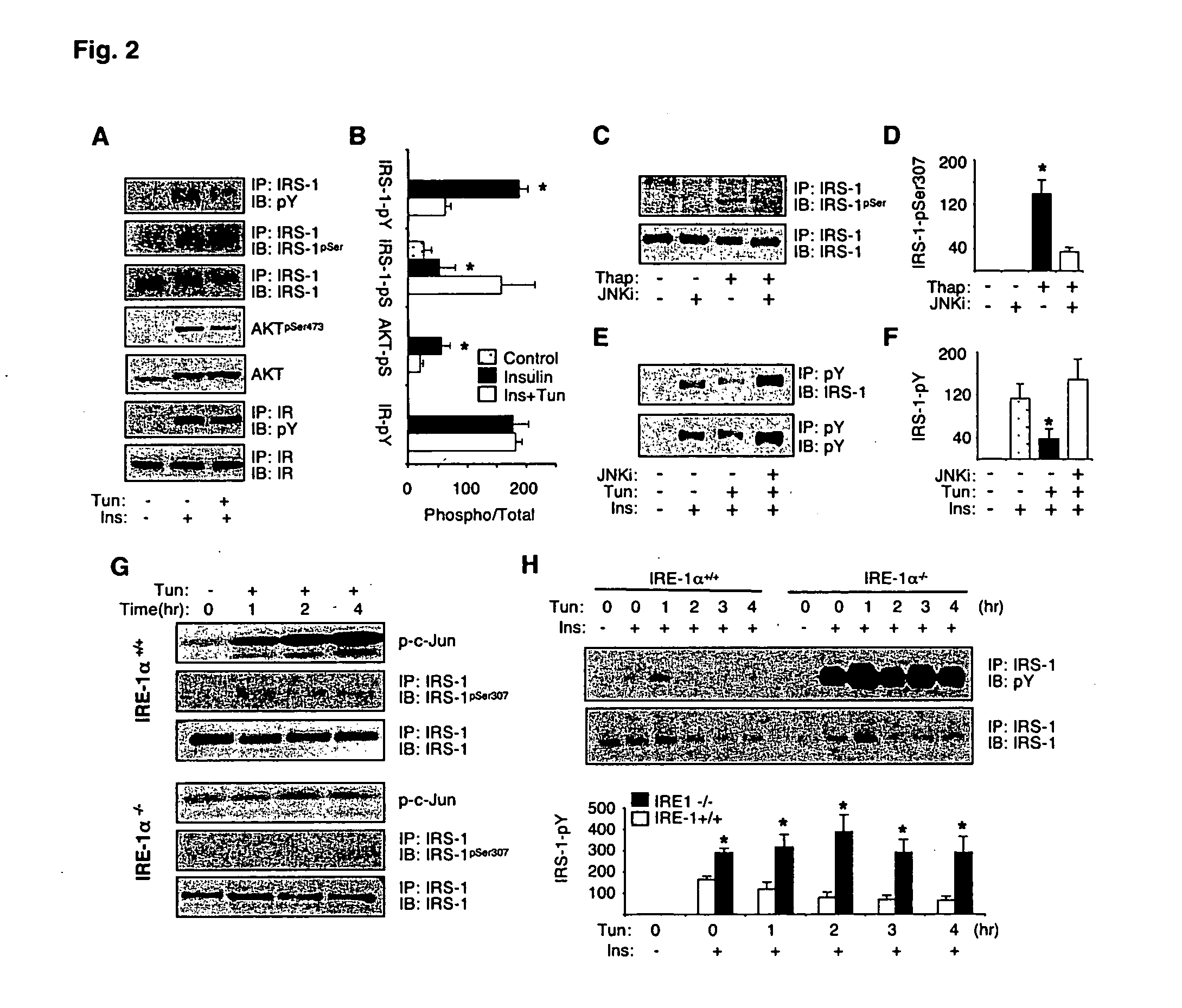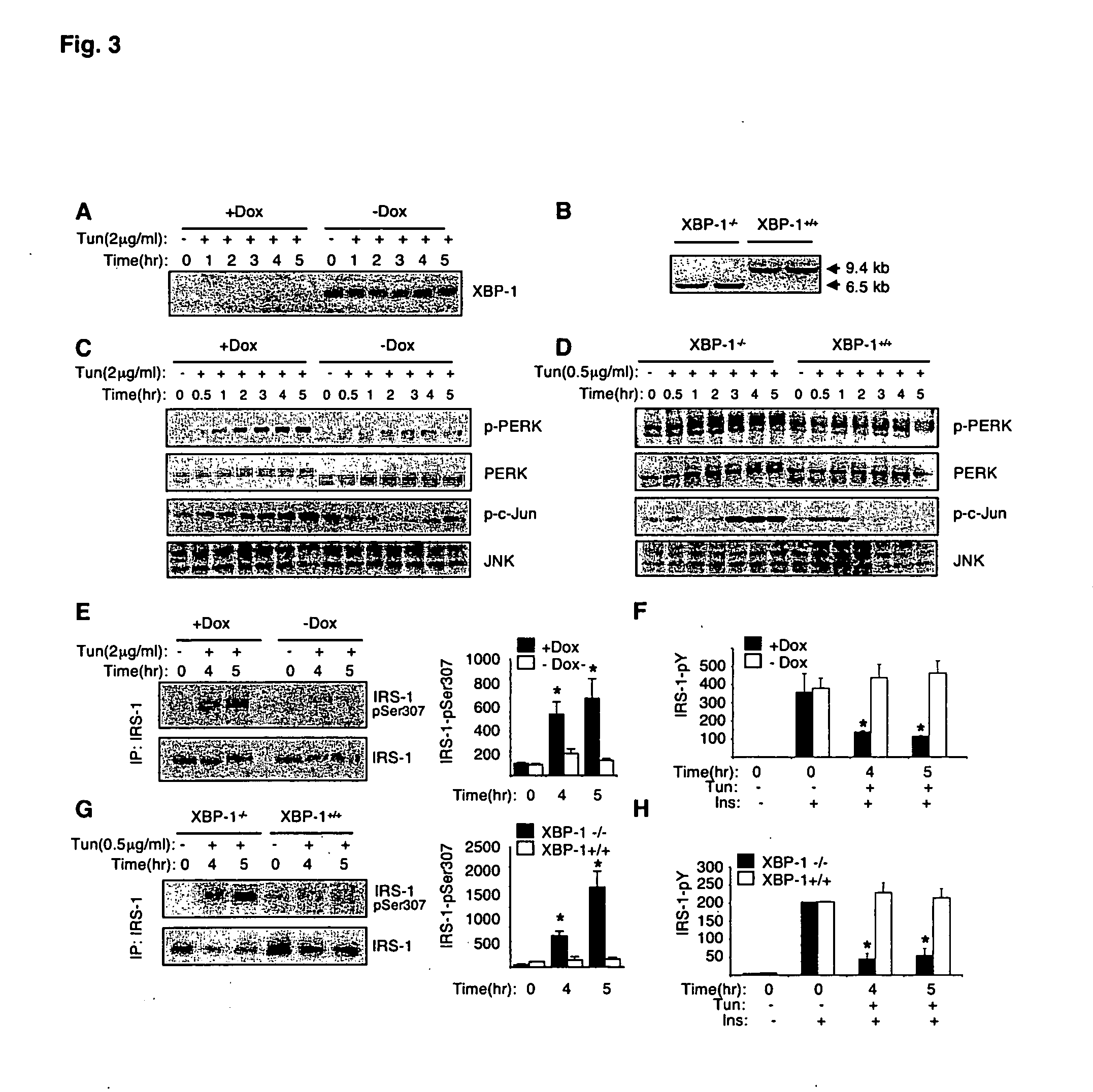Modulation of XBP-1 activity for treatment of metabolic disorders
a metabolic disorder and xbp-1 technology, applied in the field of metabolic disorders, can solve the problems of metabolic syndrome, one of the most serious threats to human health, and the inability to understand the molecular mechanisms underlying individual disorders and their links with each other, and achieve the effects of increasing expression, post-translational modification, and/or activity, and reducing glucose metabolism
- Summary
- Abstract
- Description
- Claims
- Application Information
AI Technical Summary
Benefits of technology
Problems solved by technology
Method used
Image
Examples
example 1
Induction of ER Stress in Obesity
[0259] To examine whether ER stress is increased in obesity, the expression patterns of several molecular indicators of ER stress in dietary (high fat diet-induced) and genetic (ob / ob) models of murine obesity were investigated. The pancreatic ER kinase or PKR like kinase (PERK) is an ER transmembrane protein kinase that phosphorylates the α subunit of translation initiation factor 2 (eIF2α) in response to ER stress (Shi, Y., et al. (1998) Mol. Cell Biol. 18:7499; Harding, H. P., et al. (1999) Nature 391:271; each of which incorporated herein by reference). The phosphorylation status of PERK and eIF2α is therefore a key indicator of the presence of ER stress. The phosphorylation status of PERK (Thr980) and eIF2α (Ser51) was determined using phospho-specific antibodies. These experiments demonstrated increased PERK and eIF2α phosphorylation in liver extracts of obese mice compared with lean controls (FIGS. 1A and 1B). ER stress also leads to JNK acti...
example 2
ER Stress Inhibits Insulin Action in Liver Cells
[0262] To investigate whether ER stress interferes with insulin action, Fao liver cells were pretreated with tunicamycin and thapsigargin, agents commonly used to induce ER stress. Tunicamycin significantly decreased insulin-stimulated tyrosine phosphorylation of IRS-1 (FIGS. 2A and 2B) and it also produced an increase in the molecular weight of IRS-1 (FIG. 2A). IRS-1 is a substrate for insulin receptor tyrosine kinase and serine phosphorylation of IRS-1, particularly mediated by JNK, reduces insulin receptor signaling (Hirosumi, J., et al. (2002) Nature 420:333; incorporated herein by reference). Pretreatment of Fao cells with tunicamycin produced a significant increase in serine phosphorylation of IRS-1 (FIGS. 2A and B). Tunicamycin pretreatment also suppressed insulin-induced Akt phosphorylation, a more distal event in insulin receptor signaling pathway (FIGS. 2A and B). Similar results were also obtained following treatment with t...
example 3
IRE-1 Plays a Crucial Role in Insulin Receptor Signaling
[0265] In the presence of ER stress, increased phosphorylation of inositol requiring kinase-1α (IRE-1α leads to recruitment of TNF-α receptor-associated factor 2 (TRAF2) protein and activates fNK (Urano, F., et al. (2000) Science 287:664; incorporated herein by reference). To address whether ER stress-induced insulin resistance is dependent on intact IRE-1α, JNK activation, IRS-1 serine phosphorylation, and insulin receptor signaling were measured upon exposure of IRE-1α− / − and wild type (WT) fibroblasts to tunicamycin. In the WT but not IRE-1α− / − cells, induction of ER stress by tunicamycin resulted in strong activation of JNK (FIG. 2G). Tunicamycin also stimulated phosphorylation of IRS-1 at Ser307 residue in WT (FIG. 2G) but not IRE-1α− / − fibroblasts (FIG. 2E). Importantly, tunicamycin inhibited insulin-stimulated tyrosine phosphorylation of IRS-1 in the WT cells, whereas no such effect was detected in the IRE-1α− / − cells (...
PUM
| Property | Measurement | Unit |
|---|---|---|
| stability | aaaaa | aaaaa |
| metabolic disorder | aaaaa | aaaaa |
| resistance | aaaaa | aaaaa |
Abstract
Description
Claims
Application Information
 Login to View More
Login to View More - R&D
- Intellectual Property
- Life Sciences
- Materials
- Tech Scout
- Unparalleled Data Quality
- Higher Quality Content
- 60% Fewer Hallucinations
Browse by: Latest US Patents, China's latest patents, Technical Efficacy Thesaurus, Application Domain, Technology Topic, Popular Technical Reports.
© 2025 PatSnap. All rights reserved.Legal|Privacy policy|Modern Slavery Act Transparency Statement|Sitemap|About US| Contact US: help@patsnap.com



